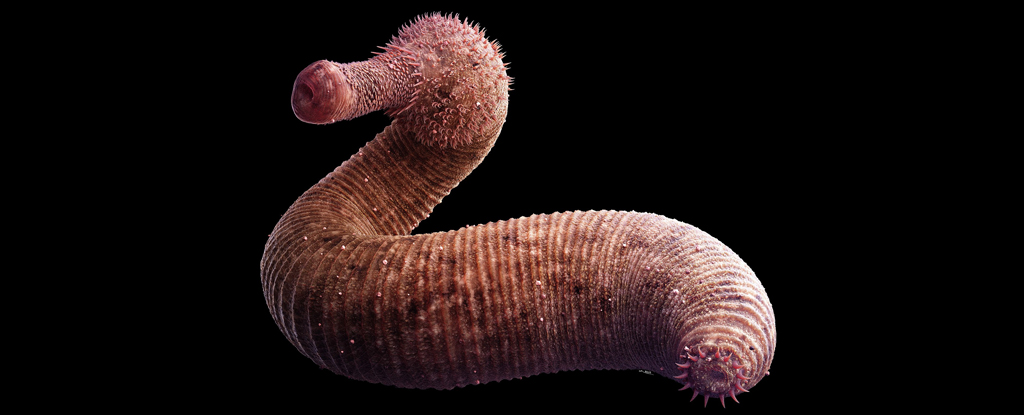A dazzling assortment of life’s variety of flavors burst into existence on Earth roughly 480 million years ago. There’s long been speculation over what spurred this prolific radiation of new species, from asteroid dust or tectonic activity, to a surge in atmospheric oxygen levels.
Now, rocks from Maryland, US, suggest an unlikely protagonist: prehistoric marine worms may have made an outsized contribution to the Great Ordovician Biodiversification Event.
“It’s really incredible to think how such small animals, ones that don’t even exist today, could alter the course of evolutionary history in such a profound way,” exclaims Johns Hopkins University geobiologist Maya Gomes.
The US researchers found increased levels of a mineral called pyrite in a specific sediment level across nine sites in Chesapeake Bay. Pyrite requires a steady supply of oxygen to form from sediment minerals, but it also easily reacts with oxygen, stealing it from the oceans and then the atmosphere.
But the more pyrite that does form and is then locked away under the ground, the more oxygen concentrations can build up. It is a useful proxy by which to measure oxygen levels from long ago.
“It’s kind of like Goldilocks,” explains Johns Hopkins paleoclimatologist Kalev Hantsoo. “The conditions have to be just right. You have to have a little bit of mixing to bring the oxygen into the sediment, but not so much that the oxygen destroys all the pyrite and there’s no net buildup.”
The levels of pyrite seen in the sediment suggest something was churning the ocean floor in such a way that it was keeping this mineral from stealing back too much of the increasing oxygen levels.
Hantsoo and colleagues strongly suspect these early oceanic sediment mixers were the worms burrowing away, along with other creatures interacting with the seafloor.
“We hypothesize that pyrite burial… increased during the protracted onset of bioturbation,” the researchers explain in their paper.

Worms and other life beneath the ground continue to play a massive role in bioturbation today – physically mixing up the top layers of soil, allowing fluid and oxygen exchange and cycling of other important nutrients, including iron, sulfur and carbon dioxide.
The researchers updated previous models of prehistoric oxygen levels with their measures of bioturbation. The results suggest oxygen levels stayed stable for millions of years until they rose sharply during the Cambrian (beginning 538.8 million years ago) and Ordovician periods. These increases were greater than previous reconstructions suggested, but could not last indefinitely.
“This increase in pyrite burial efficiency would have been temporary because intensifying bioturbation, in concert with rising [concentrations of O2], eventually would have introduced enough oxidizing power into the sediment pile to suppress pyrite retention,” Hantsoo and team write.
It wasn’t until the second detected burst in pyrite burial, during the Ordovician, 485–445 million years ago, that Earth reached and then maintained near-modern levels of oxygen. This coincided with a 30-million-year period of rapid evolutionary changes leading to the creation of countless new species.
“There’s always been this question of how oxygen levels relate to the moments in history where evolutionary forces are ramped up and you see a greater diversity of life on the planet,” says Gomes.
“With this work, we’ll be able to examine the chemistry of early oceans and reinterpret parts of the geological record.”
It seems these bursts of oxygen, assisted by the worms’ excavations, helped life’s spectacular diversity boom on Earth.
This research was published in Geochimica et Cosmochimica Acta.













/https://tf-cmsv2-smithsonianmag-media.s3.amazonaws.com/filer_public/34/31/3431771d-41e2-4f97-aed2-c5f1df5295da/gettyimages-1441066266_web.jpg)


![Ep266: [Lean Series] How to Plan a Responsible Fat Loss Phase Ep266: [Lean Series] How to Plan a Responsible Fat Loss Phase](https://carrotsncake.com/wp-content/uploads/2024/06/Carrots-N-Cake-VIP-Nutrition-Coaching-768x1040.jpeg)
.jpg)


Discussion about this post